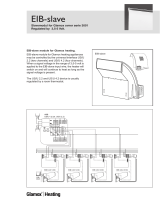
TABLE OF CONTENTS
0463 761 001
- 3 -
© ESAB AB 2021
1 SAFETY
......................................................................................................................................
5
1.1 Meaning of symbols
....................................................................................................
5
1.2 Non-compliant operation
............................................................................................
5
1.3 Safety precautions
......................................................................................................
5
2 INTRODUCTION
.........................................................................................................................
8
2.1 Equipment
....................................................................................................................
8
2.2 Purpose and function of rail cars
..............................................................................
8
2.3 Terminology used in this manual
...............................................................................
8
3 TECHNICAL DATA
.....................................................................................................................
9
3.1 EDB/EIB-15/-30
............................................................................................................
9
3.1.1 Drive unit, EDB-15/-30
.......................................................................................
9
3.1.2 Idler unit, EIB-15/-30
..........................................................................................
10
3.2 EDB/EIB-60
...................................................................................................................
11
3.2.1 Drive unit, EDB-60
..............................................................................................
11
3.2.2 Idler unit, EIB-60
.................................................................................................
12
3.3 EDB-90 and EIB-90/-120
..............................................................................................
13
3.3.1 Drive unit, EDB-90
..............................................................................................
13
3.3.2 Idler unit, EIB-90/-120
........................................................................................
14
3.4 EDB-120
........................................................................................................................
14
4 INSTALLATION
...........................................................................................................................
16
4.1 Location
........................................................................................................................
16
4.2 Lifting instructions
......................................................................................................
16
4.3 Installation procedure
.................................................................................................
16
5 OPERATION
...............................................................................................................................
17
5.1 Operating the rail cars
................................................................................................
17
5.2 Operation safety
..........................................................................................................
18
5.3 Stopping the rail cars
..................................................................................................
18
6 MAINTENANCE
..........................................................................................................................
19
6.1 General
.........................................................................................................................
19
6.2 Storage
.........................................................................................................................
19
6.3 Repair and maintenance
.............................................................................................
19
6.4 Cleaning
.......................................................................................................................
20
6.5 Breakdowns
.................................................................................................................
20
6.6 Gearmotors
..................................................................................................................
20
6.6.1 Gearmotors inspection and maintenance
...........................................................
20
6.6.2 Gearbox lubrication
............................................................................................
20
7 TROUBLESHOOTING
................................................................................................................
22
8 ORDERING SPARE PARTS
.......................................................................................................
23
WIRING DIAGRAM
................................................................................................................................
24
ORDERING NUMBERS
.........................................................................................................................
29
SPARE PARTS
......................................................................................................................................
30
SPARE PARTS - EDB-15/-30 Mechanical parts list - Drive section
..................................................
31
SPARE PARTS - EIB-15/-30 Mechanical parts list - Idler section
.....................................................
32
SPARE PARTS - EDB-60 Mechanical parts list - Drive section
........................................................
33
SPARE PARTS - EIB-60 Mechanical parts list - Idler section
...........................................................
34





















